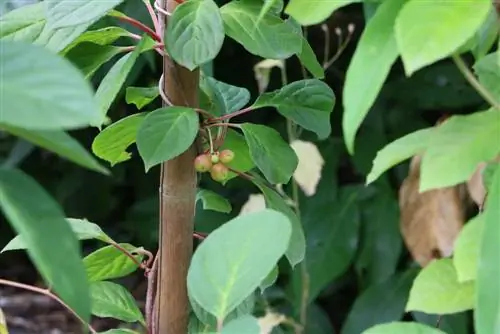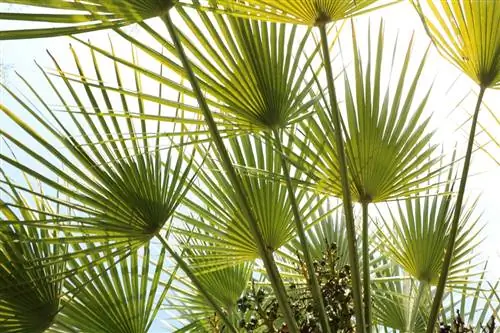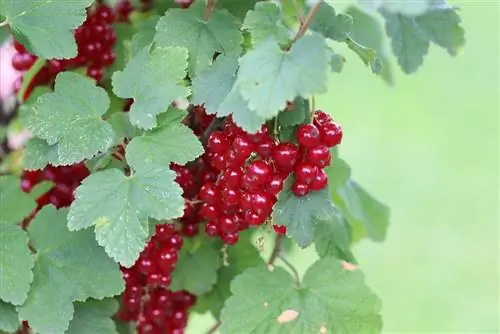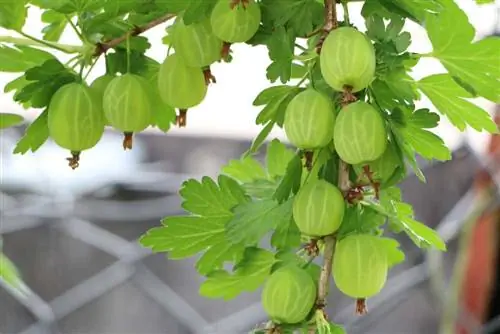- Author admin [email protected].
- Public 2023-12-17 03:39.
- Last modified 2025-01-24 12:45.
Unlike the berry bushes we know, the Wu Wei Zi berry is a fast-growing climbing plant that likes to twine itself up to five meters high. It is not only popular in local gardens as a delicious and, above all, very he althy berry, but also as a privacy screen. Schisandra chinensis is also very decorative to look at with its rich red leaves and bright red fruits. In Chinese teachings, it has been considered a panacea against almost every disease for over 2,000 years. Its name, Wu Wei Zi, also translates as “berry of five tastes,” which indicates a culinary delight.
Appearance and care
The Wu Wei Zi berry is originally native to China and is still relatively unknown as a cultivated plant in local gardens. The tasty Schisandra chinensis doesn't require much care when it comes to care, so only a little effort needs to be put into it. In local latitudes it is also called a vital berry, which says a lot about its effect on he alth. But hobby gardeners who have already discovered the plant cultivate it in the garden primarily because of its decorative appearance, as the climbing plant can reach a height of up to 5 meters and then shines with rich green leaves with red berries as pearls.
The leaves turn yellowish in autumn and fall off in winter. The light pink or white flowers that appear in spring have an intense scent. The Schisandra commercially available here is actually self-fertile, as both male and female flowers are formed on it, but in the first year it can happen that only female or male flowers are formed, so there is no harvest that year. But from the second year onwards, the large fruit clusters are formed, which look similar to the local currants. These have a varying taste between sour, sweet, bitter, s alty and spicy. Regular watering and two annual fertilizer applications make the winter-hardy older Schisandra a decorative eye-catcher in any garden.
Location
A sunny spot to light partial shade where the direct midday sun should be avoided in the summer months is the ideal location for the Schisandra. If the blazing midday sun still falls on the roots, the soil should be protected with a thick layer of mulch. Since she likes to climb, she definitely needs a climbing aid. The plant is winter-proof from the second to third year of life, so it can remain in its chosen location all year round.
The following places are ideal:
- in front of a sunny house wall
- but avoid direct midday sun
- be sure to provide climbing aid
- can grow up to five meters high
- on a fence or wall as a privacy screen
- in the garden bed by a pergola
- as a terrace boundary
- on a trellis as a privacy screen from the neighbor
The Wu Wei Zi berry does not always have to be planted as a double. Only among wild berries are there male and female varieties. The berries commercially available here are generally self-fertile as they bear both female and male flowers on a single plant.
Substrate & Soil
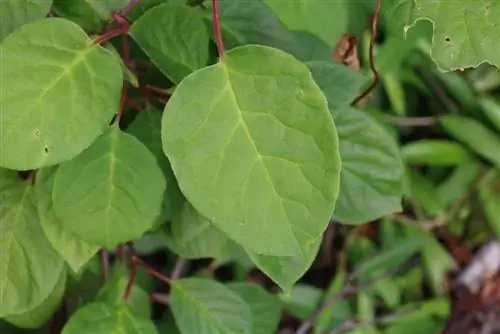
The soil should be slightly acidic to neutral. The plant also tolerates a little lime. The soil at the site should be prepared as follows:
- The earth should be light and permeable
- Mix in peat, sand and a little clay
- Add in compost before planting
Plants
Small Wu Wei Zi berry plants can be purchased in well-stocked stores, but care should be taken to choose the self-fertile variety “Eastern Prinz”. Otherwise, two plants, a female and a male variety, would have to be chosen so that the berry bears fruit in autumn. When planting, you should proceed as follows:
- If there are several plants, make sure the planting distance is about one meter apart
- Dig hole and prepare soil
- create a drainage system to prevent waterlogging
- to do this, place potsherds or stones on the bottom of the hole
- Remove the plant from the pot and water the roots well
- immerse briefly in a bucket of water
- place in planting hole and fill with soil
- press lightly
- pour well
- mulch with leaves or chopped bark
A climbing aid should be provided when planting. This can be a pergola in the open bed. Berries that are intended to serve as a privacy screen for neighbors can be grown on a trellis. A climbing aid, for example made of wooden struts or wire, should also be placed on a house wall so that the plant can climb up it.
Tip:
It is important that no trees or other plants are cultivated in the immediate vicinity of Schisandra chinensis. Because the creeper wraps itself around everything that is nearby and offers it support. However, this can be disastrous for trees and other plants because they can barely breathe.
Pouring
The vital berry likes moist but permeable soil without waterlogging. It must be watered accordingly. It does not tolerate a longer dry period so well and should therefore be watered more often, especially in a very sunny location. You should proceed as follows:
- water regularly, do not let it dry out
- Mulch helps keep the soil moist
- water daily on very hot, sunny days
- early morning or late evening hours
- on rainy days the rainwater is completely sufficient
- Ideally use collected rainwater
- if this is not available, alternatively stale tap water
- the plant is easy to tolerate lime
- ask the municipality about the lime content in the water
Tip:
If the leaves droop or turn yellow and dry before autumn, then the plant has no water and should be watered immediately to save the remaining leaves.
Fertilize
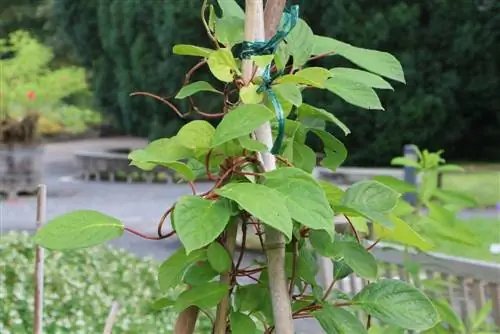
Since Schisandra chinensis is a fast and strong growing plant, it also needs a lot of fertilizer in order to be able to form flowers and fruits. Otherwise it only puts its strength into strong growth and the fruits would wither. Since the plant is a berry type, it can be fed with commercially available berry or fruit fertilizer. When using it, you should pay attention to the manufacturer's instructions, but you should definitely receive fertilizer once in the spring before flowering, once in the summer before fruit formation and the last time in the fall before hibernation.
Cutting
Pruning is usually not necessary for Schisandra. However, if it becomes too large in its location, it can definitely be cut back. The time before the flowers emerge should be used for this purpose. When cutting, you should therefore proceed as follows:
- the ideal time is late winter, early spring
- before the new leaves and flowers emerge
- This makes it easier to see where the cuts are being made
- cut all long shoots and branches
- cut to desired height
- There is usually no baldness from the inside
- new shoots also form on the main trunk
- Cut this also in height, if desired
- use only disinfected and sharp tools
- Pruning shears and rose scissors are ideal
Tip:
Cut the plants only on overcast, dry days, so the cut areas cannot be burned by the sun, nor can bacteria or fungi get into them due to the rain. If the main trunk has been cut vertically, cover the large wound with tree wax.
Propagation with cuttings
The vital berry can be propagated through cuttings. Especially if you have a tasty and well-bearing variety in your own garden, you can multiply it one-to-one and thus increase your harvest yield even further with additional, identical plants. To propagate with cuttings you should proceed as follows:
- in the spring before new growth
- use shoots that are not very young for the cuttings
- these should already be slightly woody
- cut to a length of about 20 cm
- there should be several eyes
- Place cuttings in prepared potting soil
- at least one eye should be underground
- place in a bright and warm place
- keep moist
- If the first leaves appear, the rooting has been successful
The new, small plants should be protected from excessive sunlight for the first year. After rooting has been successful, the plants can be moved to a larger pot and fertilized regularly. The new vital berries should not be planted directly in the garden bed so that they do not have to remain outside for the first winter. The pot with the new plant can be moved to a cool and frost-free, preferably darker place in winter. Next spring the Wu Wei Zi berry will be planted in its final location in the garden.
Propagate by lowering
Since Schisandra chinensis is a climbing plant, it also has many soft, long shoots in spring that can be used well as a planter. This propagation option is also usually successful because the lowering plants remain on the mother plant until they can independently absorb nutrients and water through their roots. When propagating using lowering plants, the procedure is as follows:
- select long, new shoots near the ground
- slightly stick this into the ground at one eye
- a bent nail or tent peg helps with fastening
- remove all leaves around it
- when the first roots appear, the shoot can be cut from the mother plant
- alternatively, the lowering remains on the mother plant over the next winter
- Protect with plant fleece in winter
- cut and dig up next spring
- plant again at your own location
Sowing
Sowing schisandra is usually very difficult because seedlings often do not emerge. If you still want to try it and have a self-fertile variety in your garden, you should proceed as follows:
- small fruits contain about two to three seeds
- Remove the pulp and dry well in a warm place
- Place in pots with potting soil in spring
- don't insert it too deep
- water well, keep moist
- Place transparent foil over the pot
- ventilate daily to avoid mold formation
- place in a bright and warm place
- Avoid direct sunlight
- the first seedlings appear, remove the foil
- seedlings are about ten centimeters high, prick out if necessary
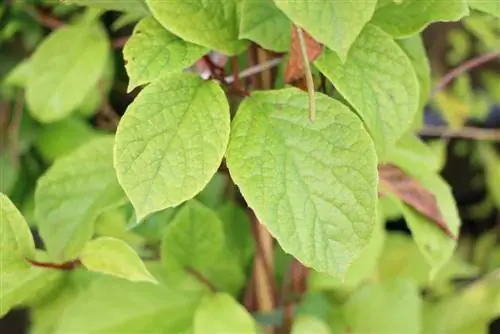
Once the seedlings have grown large enough, move them to a larger pot. Here they can now move to a protected and bright place outside when frosty nights are no longer expected. However, direct sunlight should still be avoided. Keep the small plants well moist and fertilize lightly. Use only a small amount of fertilizer, otherwise the tender roots could burn. For the first winter, the young plants remain in a cool place protected from frost, which can also be dark. Next spring the vital berry will be planted in its new, final location.
Wintering
The older Wu Wei Zi berries are hardy down to -30° Celsius. Only those who have young plants in the garden, for example by sowing them themselves, should protect them in the first two to three winters. But you can tell from the growth and the thickness of the branches and trunk when the berry no longer needs winter protection. Protection in winter should look like this:
- act before the first frost
- mulch the soil again
- cover with brushwood or straw mats
- cover the entire free-standing plant with plant fleece
- if the plant is on a house wall, attach the fleece all around to the wall
- do not fertilize in winter
- water moderately on frost-free days, do not let it dry out
- remove the fleece again in the spring before budding
Tip:
The young plants do not produce any fruit in the first few years. However, as soon as the Schisandra bears fruit, it can be left without winter protection because the fruits are usually not formed until September and should only be picked after the first frost.
Care errors, diseases or pests
Since the plant has not been cultivated in this latitude for long, but appears to be quite robust, care errors, diseases or pests have not yet been recognized or discovered. The only thing that should be paid attention to is regular watering so that the plant does not suffer from drought, which could damage the fruits. Because of drought, flowers or small, undeveloped fruits fall off before they are ripe.
Conclusion
If you like exotic plants with little care, Schisandra chinensis is exactly the right choice. This very he althy berry is not only suitable for consumption, it is also very suitable as a plant for providing privacy to neighbors or for beautifying a house wall. Because of its height of up to five meters, the rich green of the leaves, the decorative flowers and later bright red fruits until late autumn, it becomes a real eye-catcher in every corner of the garden. In addition, the Wu Wei Zi berry exudes a pleasant and intoxicating scent when it is in bloom, which makes the location near a seating area particularly attractive. All in all, the vital berry is a plant that no garden should be without.

